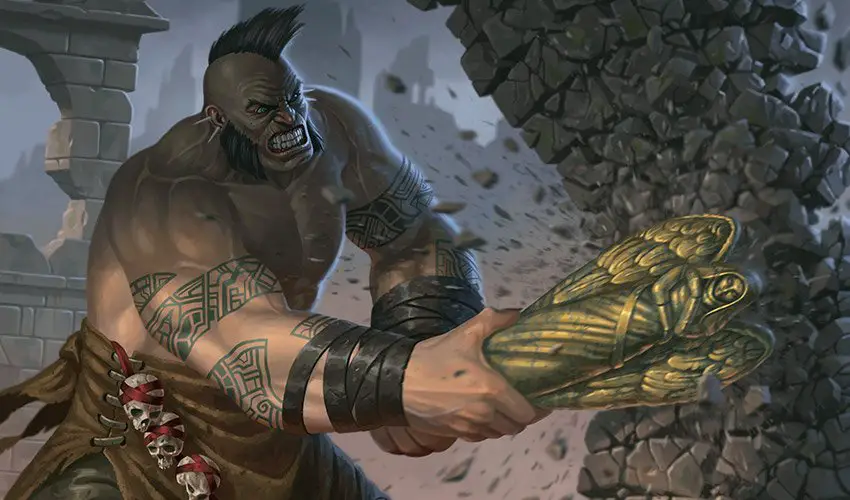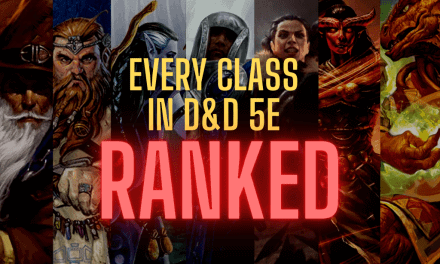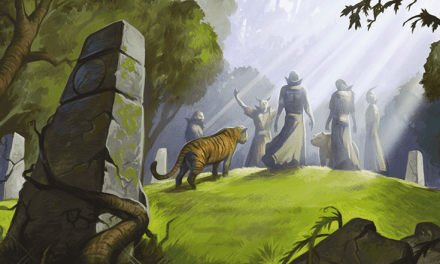Every class in D&D 5e has an iconic core feature, but few are as iconic as the Barbarian’s Rage!
Don’t get me wrong, Barbarians can be pretty scary characters as it is. It takes a bold type of person to square up against a mountain of muscles.
Add in some anger issues and it just might take a crazy person to not back away!
But what really goes into the Barbarian’s Rage that allows them to push themselves to such mythic heights in combat?
Find out now!
This is the full guide to Barbarian Rage in D&D 5e!
Barbarian Rage in D&D 5e
If we’re being honest, to say that the Barbarian’s Rage is just “getting angry” is actually quite an understatement.
What they’re actually doing is digging into a type of primal fury deep within themselves. This fury lets them push beyond their normal physical limits to both take and deal a ton more damage in combat.
As a Barbarian, you enter your Rage as a bonus action.
This Rage lasts for 1 minute but ends early if:
- You are knocked unconscious.
- At the end of your turn, you haven’t attacked a hostile creature since your last turn.
- At the end of your turn, you haven’t taken damage since your last turn.
- You voluntarily end the Rage as a bonus action.
When you hit level 15, the duration improves so that your Rage only ends if you’re knocked unconscious or choose to end it.
The number of times that you can Rage per long rest depends on your Barbarian level. At the end of a long rest, you regain all uses of your Rage.
| Barbarian Levels | Number of Rages per Long Rest |
| 1 – 2 | 2 |
| 3 – 5 | 3 |
| 6 – 11 | 4 |
| 12 – 16 | 5 |
| 17 – 19 | 6 |
| 20 | Unlimited |
While this is the Barbarian’s most important feature, you still want to be somewhat selective about when you use it.
If you use all of your Rages dealing with some little groups of goblins, you won’t have any uses left for when you’re fighting the Goblin Boss and their minions!
Use your best judgment and try to make sure that you always have a Rage ready when you’re going into a big fight.
Recommended: Full Guide to the Barbarian’s Reckless Attack
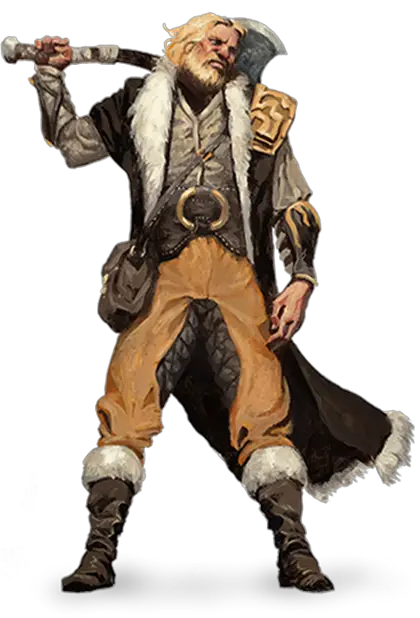
The Benefits of Raging
Entering a Rage gives you several very useful benefits.
Considering that Barbarians are typically at their best when they’re at the front of the party in melee combat, these are excellent benefits that you will absolutely love!
While Raging, you:
- Have advantage on Strength checks and Strength saving throws.
- Deal bonus damage with melee weapon attacks that use Strength.
- Gain resistance to bludgeoning, piercing, and slashing damage.
Having advantage on your Strength checks/saving throws is nice. There might be situations where you need to bust through a heavy door or lift something heavy to save some villagers/allies.
But the bonus damage and resistances are where it’s really at!
The bonus damage that you deal is based on your Barbarian level. You can see the bonus damage by level on the table below.
The numbers may seem small, but they add up very quickly and are also stacking with other modifiers to your damage output.
| Barbarian Levels | Bonus Damage |
| 1 – 8 | +2 |
| 9 – 15 | +3 |
| 16+ | +4 |
Last but not least, you’re also resisting all bludgeoning, piercing, and slashing damage. Unless the enemy is hitting you with spells, that means you’re only taking half damage!
(Keep in mind that magic weapons don’t get around this resistance either. Otherwise, it would say “from non-magical weapons”!)
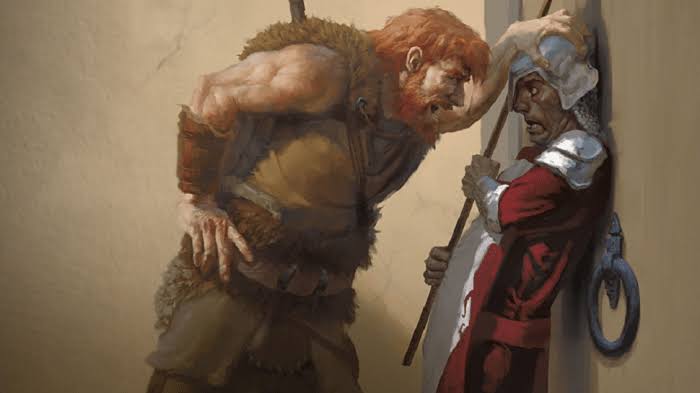
What You Can and Can’t Do While Raging
There are a couple of limitations to the Barbarian’s Rage feature that you should be aware of. They aren’t anything massive, but it’s still good to know about them.
First things first, you cannot Rage while wearing heavy armor. Well, at least not if you want the core benefits of your Rage, anyways.
(Note: Unless specified otherwise, you might still gain Rage benefits based on the subclass that you choose. According to rules-boss Jeremy Crawford, the intention behind the rules is that heavy armor and Rage don’t mix. That’s how I run it personally, but get your DMs ruling for your table.)
Most Barbarians don’t bother armor in the first place though. The Unarmored Defense feature gives them an extra bump to their AC for not wearing armor, so you’re not really losing anything here.
For my two cents, if you do decide to build a Barbarian that wears armor, keep it to either medium or light armor.
The second thing affects your ability to cast spells. Specifically, you cannot cast spells or maintain concentration on them.
Barbarians aren’t exactly known for being spellcasters, but it’s possible that you might be multiclassing. If your Barbarian has also taken some levels in the Druid or Wizard class, for example, THEN you would want to be aware of this limitation.
Casting spells (and especially maintaining concentration on them) takes a clear mind and a steady hand. You don’t necessarily have either of those when you enter a Rage which means spellcasting is out until you calm down.
It’s a bit of a niche limitation, but an important one to know!
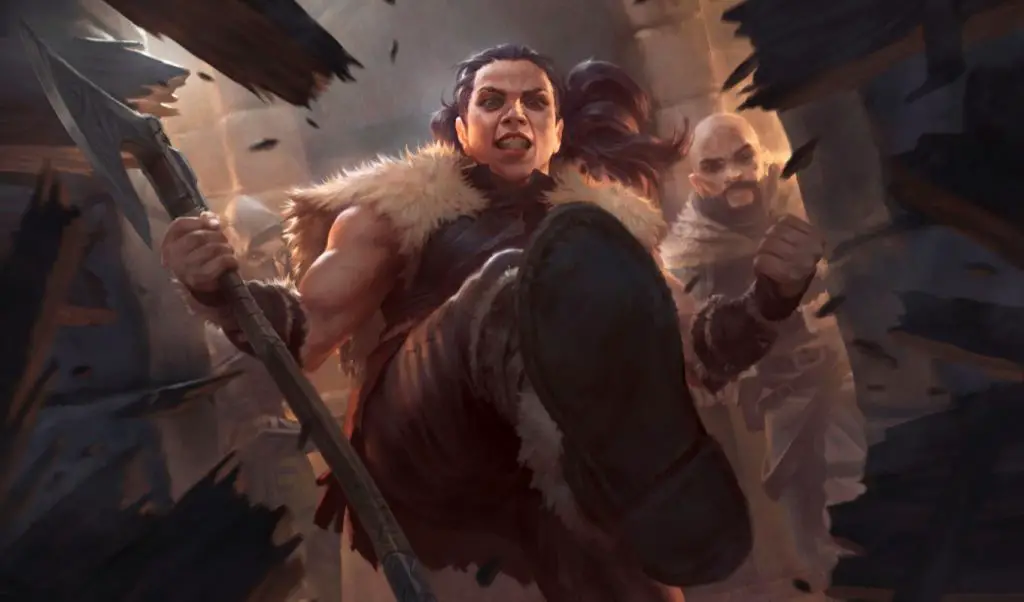
Using Rage as Each Barbarian Subclass
In addition to what we just described, each Barbarian subclass (or Primal Path) gets extra ways to harness their Rage.
The specifics of when you want to use your Rage feature pretty heavily depend on what subclass you’ve chosen.
Related: Ranking Every Barbarian Subclass in D&D 5e!
So, let’s see what it looks like when each of these different types of Barbarians enters into a Rage.
I’ll also include a link to the subclass guide for each of these subclasses if there’s one you want to learn more about.
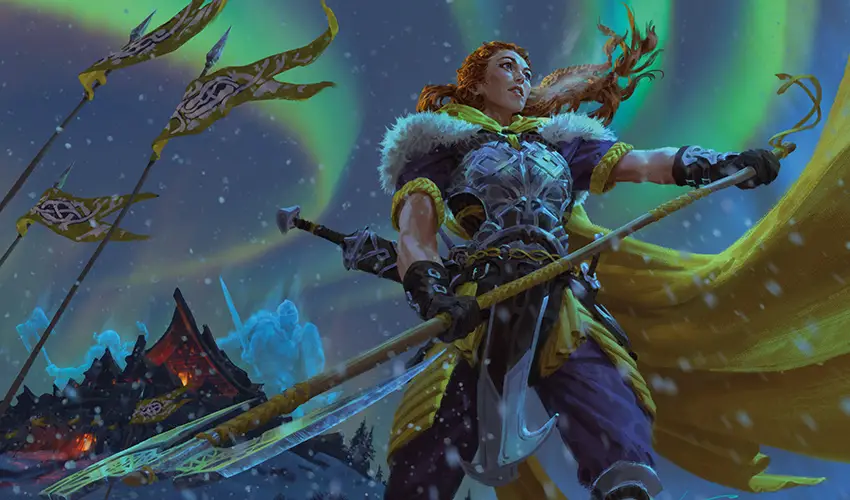
Path of the Ancestral Guardian
The Ancestral Guardian is a defensive powerhouse among the Barbarian subclasses. Not to mention, they’ve got one of the coolest ways to use their Rage!
What makes the Ancestral Guardian Barbarian so unique is that they fight with the protection and guidance of their ancestors. When they enter a Rage, the spirits of those ancestors come to offer their assistance as well.
These spirits can hinder an enemy’s attacks that aren’t directed at you. If the enemy does try to attack your allies, they’ll be doing so at disadvantage. Even if they still hit, they’ll only be dealing half damage against your friend!
As the Ancestral Guardian Barbarian levels up, the effects of their ancestral spirits grow even stronger.
The spirits are able to reduce the damage that your allies take. Eventually, the spirits will even be able to strike back and force an enemy to take damage equal to the amount that the spirits prevented!
With all of the benefits that you’re gaining from Rage, being able to offer this extra protection to your allies is incredibly handy.
You’ll have no problem taking and dealing plenty of damage, but now you can focus on dealing with the enemy knowing that the spirits your Rage summons are protecting your party!
Learn more with my full guide to the Ancestral Guardian Barbarian in D&D 5e!
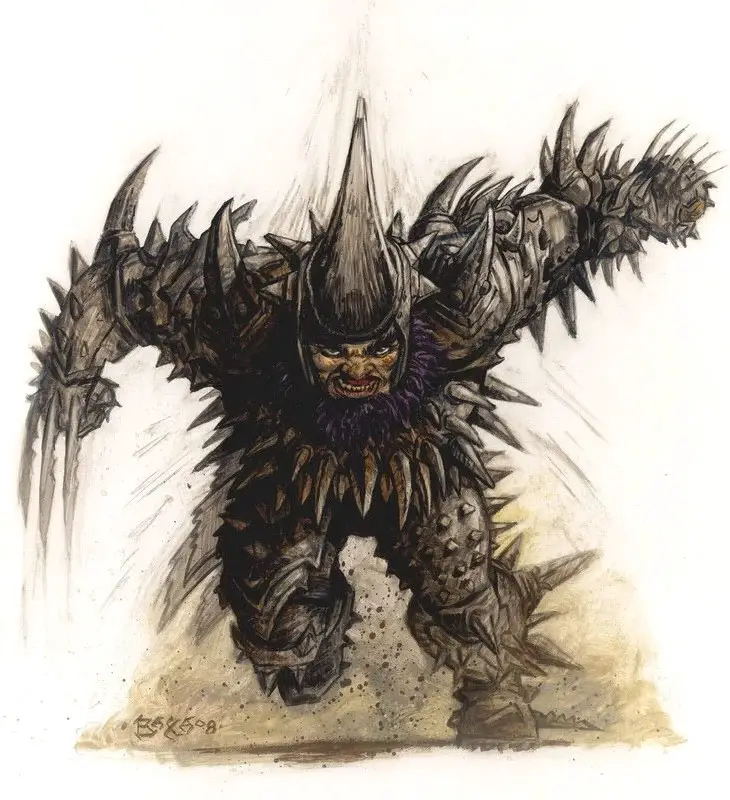
Path of the Battlerager
The Path of the Battlerager Barbarian is a Dwarven tradition. I wouldn’t necessarily say it’s a proud Dwarvish tradition, but I also wouldn’t say it’s ineffective!
These Barbarians are something else. I mean, Battleragers’ name in Dwarvish (“Kuldjargh”) literally translates to “axe idiot. “
Remember how I said most Barbarians don’t bother with wearing armor? For Battleragers, the spiked armor that they wear is their greatest weapon when they enter a Rage!
Storming into enemy formations like a mix between a wrecking ball and a porcupine who is having a REALLY bad day, Battleragers are excellent at disrupting enemies.
While their foes try to deal with the spiky, frothy-mouthed ball of hate that is grappling and impaling their ranks, the Battlerager’s allies are able to move in and take advantage of the chaos!
The name of the game for Battleragers is to enter their Rage, charge into the enemies’ lines, and start grappling. While they’re doing this, the enemies they’re grappling (and any who get too close to the “rough and tumble” Barbarian) are being stabbed by the spiked armor.
As they level up, Battleragers’ Rage improves by granting them temporary hit points and extra mobility.
Learn more with my full guide to the Battlerager Barbarian in D&D 5e!
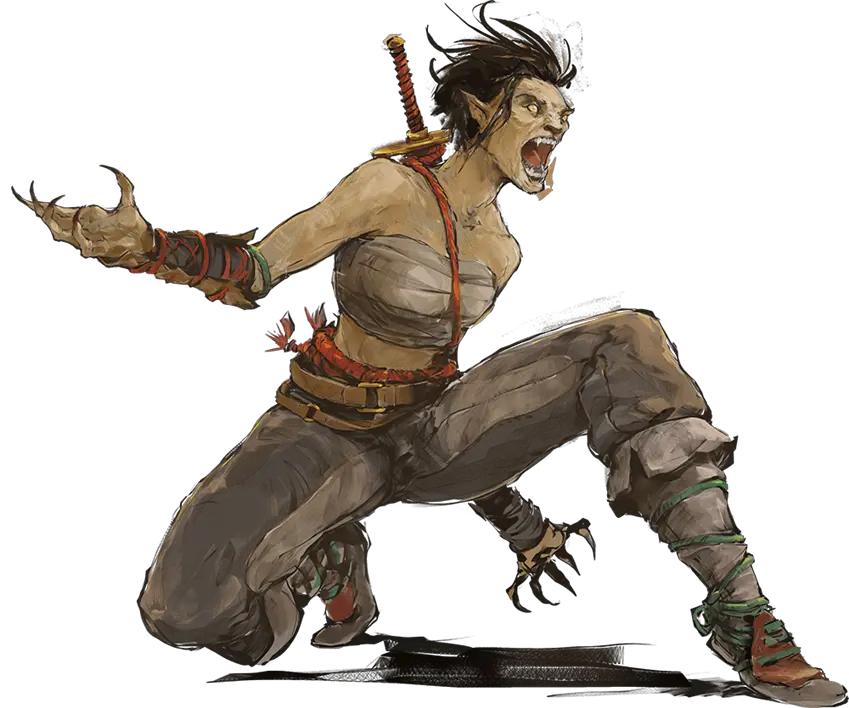
Path of the Beast
Beast Barbarians literally transform when they enter a Rage.
Each time you Rage, you can choose if you want your character to grow a bestial muzzle (or large mandibles), a spiny tail, or razor-sharp claws.
Beast Barbarians just might be the best example of what it means to unleash a primal fury upon one’s enemies. They’re not fully humanoid anymore, but not entirely beast. Instead, they’re a terrifying and uncontrollable mix of the two!
Enhancing your biting abilities with a muzzle or mandibles, you’re able to recover hit points with your attacks. Specifically, you regain hit points equal to your proficiency bonus though you must have less than half of your maximum hit points for this to work.
If you’d prefer the slice and dice your enemies, growing claws is an excellent way to do that! This option gets you an extra attack with your claws while you’re raging. It’s short and simple, but also really good!
Lastly, growing a tail with your Rage makes for a good defensive option. Swiping your tail as enemies try to attack you, you increase your AC by 1d8 against that attack and can potentially turn a hit into a miss!
There’s a nice synergy between the Beast Barbarian’s features and the benefits you gain from your Rage.
You’ll have plenty of ways to bring the pain on your enemies in any situation and the survivability to do it again and again!
Learn more with the Full Guide to the Beast Barbarian in D&D 5e!
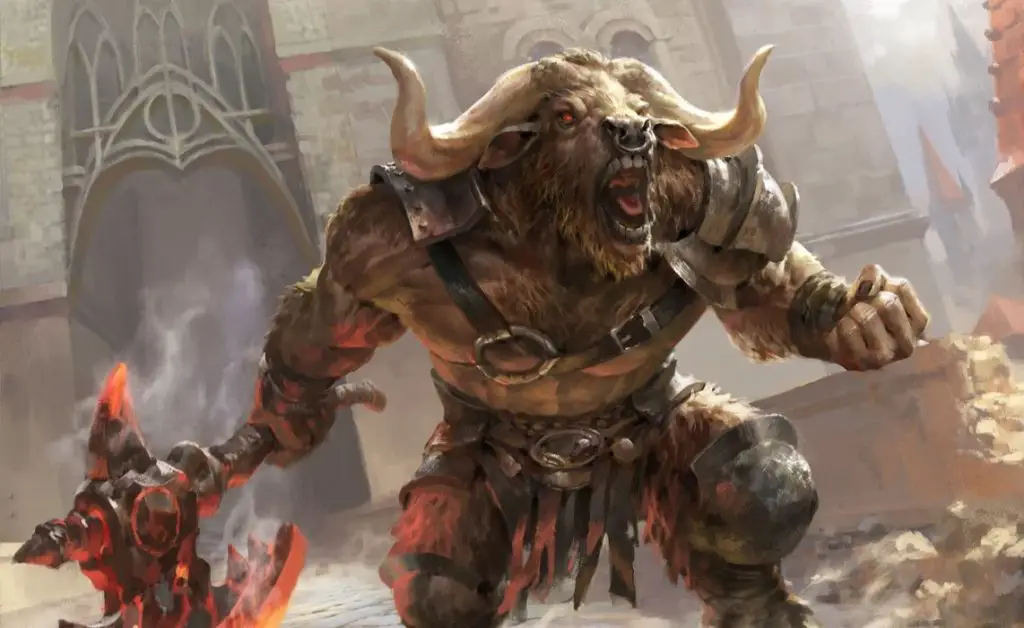
Path of the Berserker
The image that comes to mind when pretty much anyone thinks of a raging Barbarian is the Berserker.
Even by the standards of other Barbarians, the Berserker’s rage sees them throwing all caution to the wind to overwhelm their enemies. It goes beyond Rage and becomes a full-blown Frenzy!
While in this Frenzy, the Berserker Barbarian can make an extra melee weapon attack as a bonus action on each of their turns.
Since they’re probably swinging around a greataxe or some other heavy-hitting weapon, this can do a ton to improve their damage output.
Unfortunately, they are also gaining a level of exhaustion when their Frenzy ends.
It’s a powerful Rage feature, but it comes at a high cost that keeps it best served as “for emergencies only”!
When you hit level 6 as a Berserker Barbarian, you are able to shrug off attempts to charm or frighten you. If you’ve already fallen under one of these effects, entering a Rage suspends it until you end your Rage or deal with the source.
Honestly, this is a great benefit for Berserker Barbarians!
Since Barbarians tend to have lower mental ability scores, they’re usually prime targets for enemies who like to play mind games.
Believe me, nobody wants to watch their raging Barbarian ally suddenly be turned against them!
Check out my full guide to the Berserker Barbarian in D&D 5e to learn more!
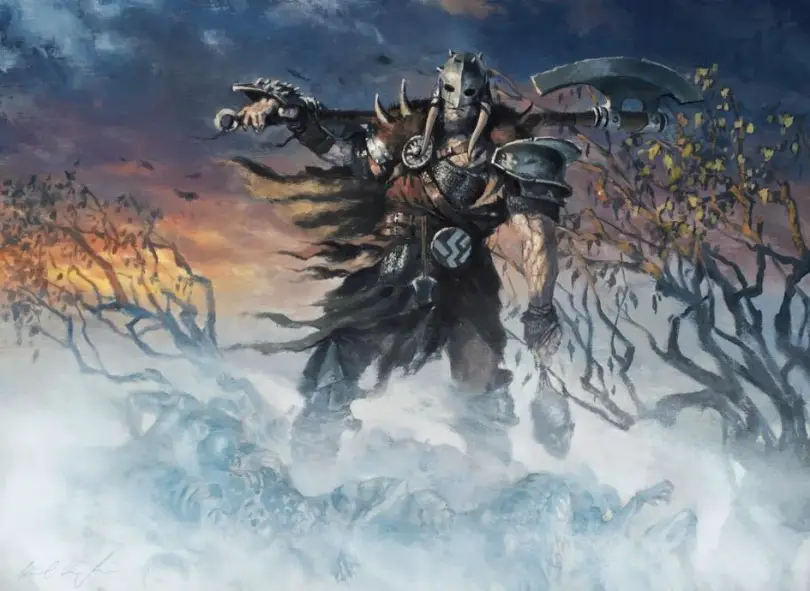
Path of the Storm Herald
If one thing is a perfect symbol of the Barbarian’s Rage, it’s the raw might of the storm. The Storm Herald Barbarian takes this to new heights by summoning an aura around them when they rage.
The benefits of this aura take one of three forms depending on which environment the Storm Herald Barbarian has chosen.
They might bring the fiery heat of the desert to scorch their foes, ferocious bolts of lightning from the sea, or the resilience of the mighty tundra.
As the Storm Herald Barbarian levels up, the power of the aura they bring forth when they rage increases.
Gaining more resistances for themselves and their allies, utility, and new ways to exercise control in combat, the Storm Herald Barbarian’s rage can do a bit of everything!
The real strength of the Storm Herald Barbarian’s unique form of Rage is that you can really play to what your party needs.
As you level up, you’ll likely attune to different environments which means you can make sure that the benefits you’re gaining perfectly fit the situation and party strategy.
Each of the environmental benefits is so varied that it’s impossible to explain them all here, but you can learn more in my subclass guide!
Check out the full guide to the Storm Herald Barbarian in D&D 5e!
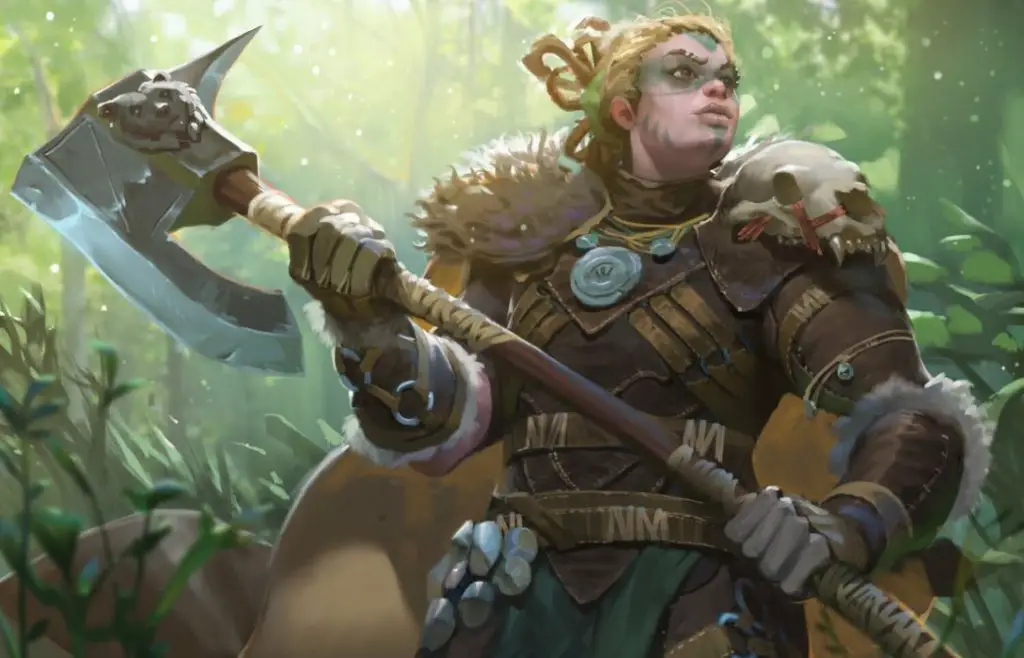
Path of the Totem Warrior
The Totem Warrior is one of the most complex Barbarian subclasses, but it’s an incredibly good one!
What separates Totem Warrior Barbarians from the other subclasses is that each of their features gives them a choice of what benefit they would like. Each of these benefits are represented by a different animal spirit.
Naturally, this extends to enhancing their Rage feature!
The Bear is the most popular choice and, honestly, for very good reason. Instead of just resisting bludgeoning, slashing, and piercing damage while raging, you now resist ALL damage (including magical) except for Psychic damage.
Since Psychic damage is pretty rare, the Bear option is incredibly powerful!
The Eagle spirit lets you Dash as a bonus action on your turn and also gives enemies disadvantage on their opportunity attacks against you while you’re raging.
If you want to be fast and angry, the Elk spirit enhances your Rage by giving you an extra 15 feet of movement.
Want to jump higher and farther? The Tiger spirit enhances your Rage to help you do just that. (Not gonna lie, this one’s underwhelming, but the Tiger spirit does get better in the Totem Warriors later features.)
My second pick for the Totem Warrior’s Rage is the Wolf spirit. This one lets you give all of your allies advantage on their melee attacks against any hostile creature within 5 feet of you.
Learn more with the Full Guide to the Totem Warrior Barbarian!
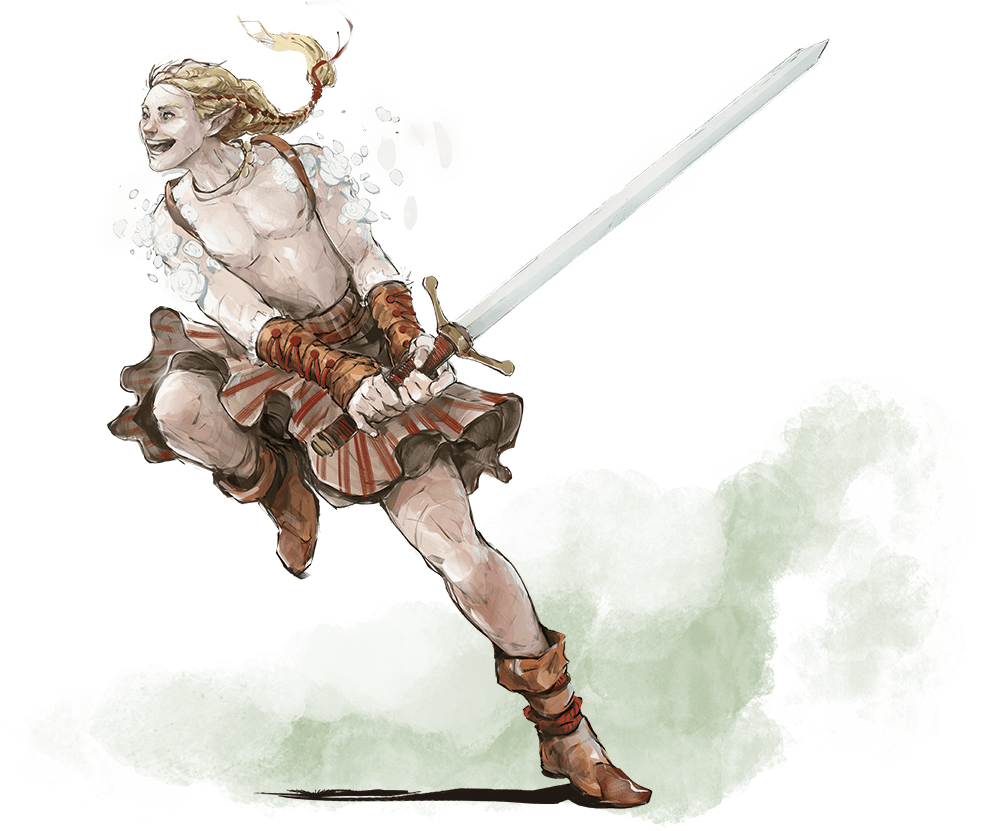
Path of Wild Magic
Magic itself can be unpredictable and takes a ton of discipline to really harness. This is especially true when it comes to the exceptionally unpredictable Wild Magic.
So why not let the hulking, angry Barbarian play with Wild Magic? What’s the worst that could happen?
Well, as it turns out, the effects that Wild Magic Barbarians create when they enter their rage are random but (thankfully) all helpful.
What varies here is how the effects are helpful.
One fight might see the Wild Magic Barbarian being able to teleport around the battlefield. Meanwhile, the next might see the Barbarian lashing out with shadowy tendrils or protecting themselves and their allies with bursts of colored lights.
In time, these effects can even change each round of combat as you take damage or fail saving throws!
As a capstone feature, you’ll eventually be able to roll on the Wild Magic Surge table twice and take your pick of the options you get. If you roll doubles, you can take your pick from the whole list!
Between the great benefits that Rage already gives you and the options from your Wild Magic Surge, you get a TON of mileage with each Rage.
Wild Magic Barbarians’ Rage might be unpredictable, but it’s never boring. If they stay adaptable, their enemies will never know what’s going to happen next!
Check out my full guide to the Wild Magic Barbarian in D&D 5e!
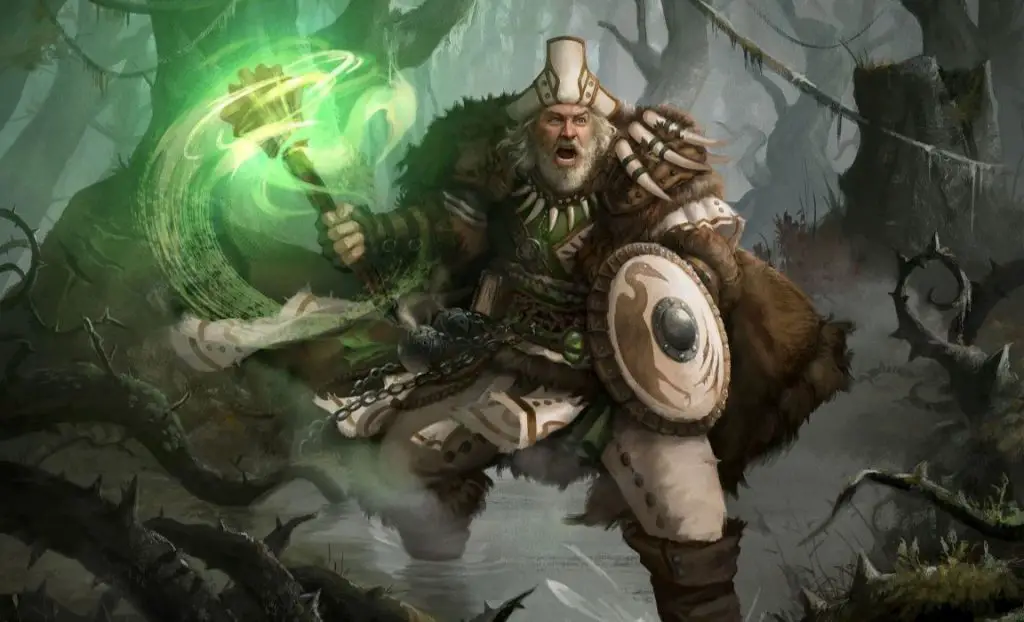
Path of the Zealot
The Zealot Barbarian just might be one of the most underrated subclasses in all of D&D 5e. Their features are deceptively simple, but they just work together so well!
When a Zealot Barbarian enters a Rage, they’re channeling a powerful and divine fury.
While raging, the first creature you hit with a weapon attack on your turn takes extra damage. Because this damage is 1d6 + half of your Barbarian level, the extra damage will scale as you level.
You get to choose if you want this damage to be Radiant or Necrotic. (Radiant damage is a particularly good choice in most cases since it’s so rarely resisted!)
What makes this so good is its reliability. You’re already getting bonus damage from your Rage, so why not add even more damage on top of that?!
At level 6, your Rage gets an extra benefit from the Path of the Zealot.
Specifically, you’re able to reroll a failed saving throw once per Rage. There are plenty of “save or suck” spells that enemies love to use, so keeping a reroll in your back pocket is incredibly handy.
But the capstone is one of the most incredible improvements to your Rage you could ask for!
With the Zealot Barbarian’s capstone, your Rage makes you literally too angry to die.
Being at zero hit points doesn’t knock you unconscious and dying due to failing your death saving throws is held off until your Rage ends. As long as you slam a healing potion or have an ally cast a healing spell on you, you’ll be fit as a fiddle!
Check out my full guide to the Zealot Barbarian in D&D 5e for more!
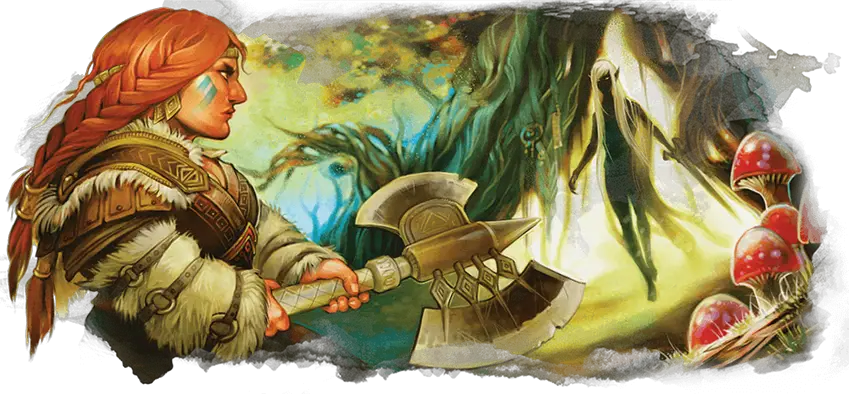
Barbarian Rage – FAQs
Before we wind down this guide to the Barbarian’s Rage feature, I want to take a moment to address some common questions.
If you’ve got a question that hasn’t been covered in this article, reach out in the comments. I’m always happy to help!
Does Rage End If You Miss All Your Attacks?
Your Rage does not end if you miss all of your attacks on your turn. What matters is that you attacked a hostile creature.
Of course, you WANT to hit but sometimes the dice have other plans. As long as you’re swinging (or getting hit), you can keep Raging!
Does Rage Give Advantage on Attacks?
Rage does not give you advantage on your attacks, however the Barbarian’s Reckless Attack feature does. These two features go together like peanut butter and jelly.
Reckless Attack gives you advantage on your attacks but also gives enemies advantage on their attacks against you.
However, the extra damage (and other benefits) of your Rage combined with resisting physical damages means that you should be in good shape!
Does Rage End If You Take Damage?
Quite the opposite!
Taking damage is what Barbarians do best and Rage makes them even better at it.
In fact, a Barbarian that isn’t attacking an enemy would need to take damage to stay in their Rage. If they can’t attack an enemy for some reason but combat isn’t over and they want to keep Raging, they might even just need to damage themselves!
Do You Add the Rage Bonus to Your Attack Roll?
The bonus from the Barbarian’s Rage feature is only added to damage rolls and not attack rolls.
To increase your chances of hitting your target, consider using Reckless Attack to make the attack at advantage!
Does Rage End Frightened?
Rage does not normally end the Frightened condition.
The exception to this is the Berserker Barbarian’s Mindless Rage feature which makes them immune to being charmed or frightened. If they are already under such an effect, the effect is suspended while they Rage.
Does Rage Work with Thrown Weapons?
The bonus damage from Rage only applies to melee weapon attacks that use Strength. A thrown weapon would qualify as a “ranged weapon attack” which means that the Rage damage wouldn’t apply.
For example, the bonus damage would apply to a Barbarian who is attacking an enemy in melee with a handaxe. If they were to throw the handaxe at an enemy, the damage would no longer apply.
At least, that’s the rules as they are written. However, there are plenty of debates about this out there, so check with your DM for their ruling on the matter.
Does Calm Emotions End Rage?
Calm Emotions is a handy spell for dealing with the charmed or frightened conditions, but those don’t apply here.
It could be used to make a raging Barbarian indifferent about certain creatures. Reducing the number of creatures that the Barbarian has a reason to attack could lead to them ending their Rage early.
However, the spell itself does not directly end a Barbarian’s Rage.
Conclusion – Barbarian Rage in D&D 5e Explained
Okay, so I really didn’t plan for this article to be so long. However, this is such an important feature for Barbarians that I wanted to make sure that I covered everything.
Got any questions that I missed? Any fun stories about your own raging Barbarian? Let’s chat in the comments!
Don’t forget to sign up for the Tabletop Joab newsletter! It’s the best way to get all the latest player guides, DM Tips, news, reviews, and more for D&D 5e right to your inbox!
You can also follow me on Facebook and Twitter.
If you found this article helpful and want to support the site, you can buy me a coffee here! (It’s not expected, but very appreciated!)

